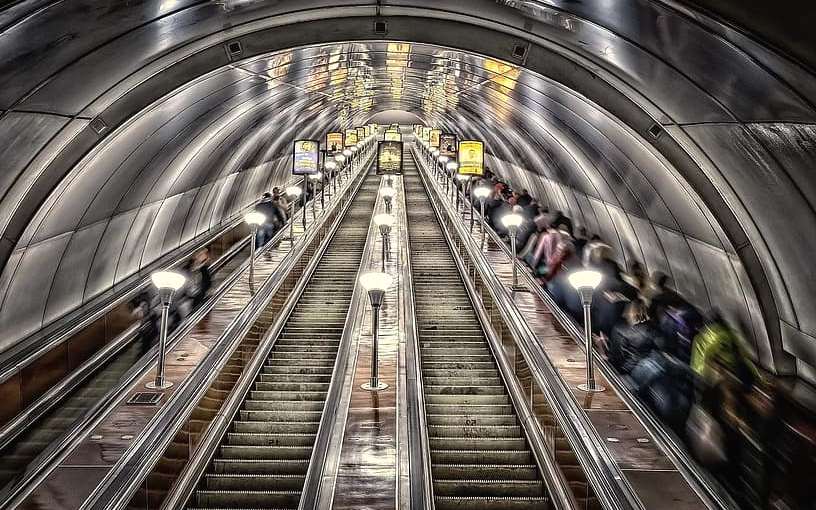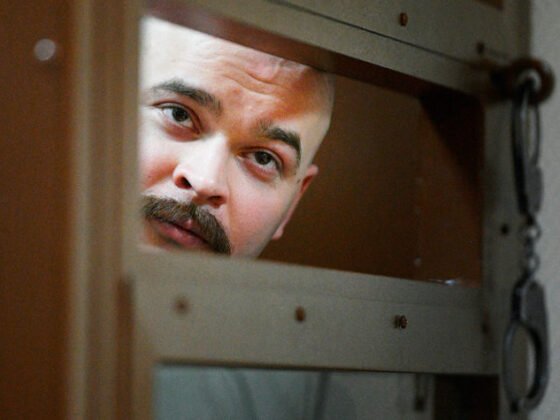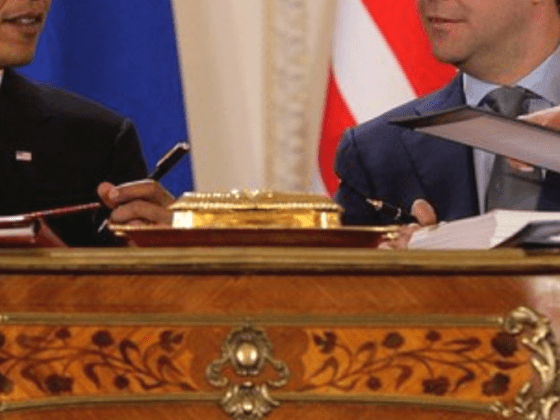Policy Memo: 677
(PONARS Eurasia Policy Memo) The ongoing COVID-19 pandemic has left noticeable traces in everyday life of Russian society. Eighty percent of Russians had to alter their lifestyles due to the virus, with half reporting that their incomes shrank, and this share keeps growing. Has the pandemic also affected how Russian citizens feel about their government? To explore how the pandemic has affected political support in Russia, we analyzed data from a representative online panel survey, “Values in Crisis,” carried out by the Laboratory for Comparative Social Research at the Higher School of Economics (LCSR, HSE).
We looked at four indicators of support: confidence in (1) the Russian government, (2) the health sector, and (3) the country’s institutions as a whole, as well as respondents’ opinions on (4) how well the government is handling the coronavirus crisis. We found that actual encounters with COVID-19 and the public healthcare system are negatively, although weakly, associated with all four indicators. We also found that the fear of getting sick moderately positively correlates with assessments of the government’s response to the crisis. Reported negative economic impacts do not seem to affect political trust and support. Strikingly, the most distrusting group of respondents are the so-called “COVID-19-dissidents,” who consistently scored low on all measures due to their refusal to take COVID-19 seriously.
Dealing with Distress: Expectations vs. Experience
Previous research suggests that external shocks such as natural disasters or epidemics may lead to a temporary consolidation of political support around the government, or the “rally ‘round the flag” effect. Effective government response may facilitate the growth of political support. This is what happened in South Korea when the incumbent Democratic party obtained an absolute majority of seats after the government successfully managed the pandemic. Not all governments have coped with COVID-19 as well as South Korea. Several countries exhibited declining governmental approval ratings, such as the United States.
It is difficult to conclude unambiguously whether the Russian government’s anti-epidemic measures are a success or failure. At the end of August, for example, Russia was in fourth place in the world ranking of countries with the largest number of COVID-19 cases (985,346, on August 29), but the official death toll (17,025) was relatively low (12th place in the world). There have been some allegations that the official mortality rates are underestimated. Existing evidence about the political effects of the pandemic is limited and contradictory. For instance, Levada Center polls registered “historical minimums” of 59 percent of political support for President Vladimir Putin, even while the state-owned polling VTSiOM agency reported stable ratings for him and even an increase in support for him after his April speeches.
Do those who did encounter the virus differ in terms of support for the government from those who did not? Some studies of natural disasters suggest that those who were directly exposed to damaging events tend to be more supportive of the existing government as (1) they observed the public services in action (of course, if government response was effective) and (2) the origin of the threat is completely exogenous and uncontrolled by anyone, so the government cannot be blamed for it.
On the other hand, the impact of large-scale infectious outbreaks may differ from the political effects of other natural disasters since the negative outcomes are not produced instantly or in a short time period but are distributed more or less evenly across a relatively large time span. The duration of the outbreak may prevent rally effects because of (1) the lack of a single triggering event, which helps to synchronize individual emotions, and (2) issue fatigue. Still, these outcomes are not localized to a specific exposed area but may affect virtually everyone. Such uncertainty may cause severe anxiety among those having not been affected yet. In turn, anxiety may invoke the need for protection and hence boosts support for the government.
Furthermore, except for a few vulnerable groups (primarily elderly people or people with chronic health conditions), the COVID-19 infection is not especially hard and dangerous for infected individuals. Most of them demonstrate only mild or moderate symptoms. So, it would be an exaggeration to label every individual case as a “disaster.” According to this reasoning, one may expect that the actual experience of the coronavirus should not systematically affect the level of political support among infected people, while anxiety about the virus may be a more important predictor of support.
Figure 1. Experiencing COVID-19 (X axis) and Political Support (Y axis)

The plots show mean values by groups with 95 percent confidence intervals. NA–no answer. Percentages demonstrate the shares of respondents in each group. N = 1,527. Source: “Values in Crisis” survey, LCSR HSE.
Evidence from a nationally representative online panel survey that was carried out from June 10 to 16th shows that the share of Russian citizens directly exposed to the coronavirus is relatively small compared to the share of those who had to change their lifestyle irrespective of the exposure to the virus (see Figure 1). The overall number of respondents who have been diagnosed with the coronavirus is small: only 1.4 percent of the respondents mentioned positive test results. If to widen the definition of “COVID-19 experience” by including those who mentioned symptoms similar to COVID-19, this number grows up to 6.9 percent of the sample. Adding the cases of family members who were diagnosed with COVID-19 leaves us with 12.9 percent of the respondents reporting a (more or less) close encounter with the virus. Notably, 5.7 percent refused to give an answer, which may suggest that this topic is somewhat sensitive to the respondents.
One way or another, experiencing the disease is associated with a slight decrease in confidence in government, but the effect’s size is almost negligible— just 0.1 on a 0-3-scale. The level of trust in the healthcare system and political institutions is also somewhat lower among those who encountered the virus, although the differences here are even smaller (0.06 and 0.05, respectively). All these differences fail to reach statistical significance. In addition, the experience of the disease is completely unrelated to the level of satisfaction with how effectively the government is coping with the situation. In contrast to this, the fear of getting sick (for the respondents themselves and their relatives) positively correlates with the approval of the government’s anti-pandemic policies.[1] Importantly, around 60 percent of the respondents reported high rates of concerns for their (or their relatives’) health. So, it seems that in Russia, anxiety is a more important correlate of political support than the actual experience of the disease.
The Rise of Economic Concerns and the Blame Game
Yet, the pandemic is not limited to a physiological experience. According to FOM surveys, around half of the respondents are afraid to lose employment due to the pandemic or its consequences. The scholarly literature on retrospective voting teaches us that economic concerns often lead to a decrease in political support and turn citizens into a more critical mode. This is true for Russia as well: the economic turmoil of the 1990s as well as the financial crisis of 2008 unavoidably provoked political discontent in one form or another. The only exception was the massive rallying in 2014 when the blame for the negative economic consequences of the annexation of Crimea and the War in Donbas was largely attributed to foreign sanctions. Nonetheless, even in that case, the only beneficiary of the “rallying ‘round the flag” was for Putin—not for any other political actors or institutions. Later, in 2018, pension reform put an end to his “Teflon” presidential rating.
We constructed a binary variable that stands for any negative event in the labor market related to the pandemic—job loss, bankruptcy, a transition from full-time to part-time employment. The share of respondents reporting at least one such event in our sample is 21.9 percent, which is somewhat lower than the numbers provided by FOM. Figure 2 shows mean values of our four political variables among respondents who experienced and did not experience the negative economic effects of the COVID-19 outbreak in Russia. Trust in government and political institutions, in general, does not differ across the groups, while trust in the healthcare system is (non-significantly, only by 0.06 points on a 0-3 scale) higher among those who suffered from the crisis. But satisfaction with the way the government has handled the pandemic turns out to be lower. In contrast to the three “confidence” variables, this difference is statistically significant, but the effect size is very small: 0.19 (1.64 vs. 1.83) on a 0-4 scale. The bottom line is that we observe neither any “rallying” effect that would temporarily boost political support nor any dramatic decrease in support due to economic grievances.
It is, however, worth noticing that we may have caught a transitional situation when the adverse effects of the recession had not yet been observed. Such effects may loom larger after the summer break. Another possible explanation (not necessarily contradicting the first) is the extent to which the state manages to shift blame. State-sponsored media, as well as Kremlin spokesperson Dmitriy Peskov and Moscow Mayor Sergei Sobyanin, have made a significant effort to shift the blame either on regional governors or irresponsible citizens who dared to travel abroad in the times of the pandemic or reckless barbecue-lovers who were allegedly spreading the disease in city parks during “the non-working days.” Later on, they claimed business was guilty for firing employees and blamed it for engaging in all kinds of “shady” activities instead of supporting the state.
One way or another, blame for the havoc was attributed even to loyal groups of the population. This scapegoating strategy has had some success: we found a modest positive association between the level of anxiety about one’s (or one’s relatives’) health and the propensity to blame fellow citizens for irresponsible and reckless behavior in the time of pandemic.[2] Last but not least, public employees, including healthcare workers, were entitled to additional benefits. All families with children between 3 and 16 were made eligible to receive a one-time payment of 10,000 rubles per child. Although the amounts were fairly modest and often arrived with delays, they still might help somewhat to preserve the pre-outbreak level of political support and institutional trust.
Figure 2. Negative Economic Experience (X axis) and Political Support (Y axis)

Source: Online panel survey “Values in Crisis” by LCSR HSE.
COVID-Dissidents as a New Source of Political Protest?
Against our expectations, the crucial factor that correlated with systematically lower trust in government, political institutions, and the healthcare system is neither negative economic experience nor fear of coronavirus, but the overall lack of trust in official information on the coronavirus. This does not seem to result from the low quality or unreliability of official statistics on the death toll, infected and recovered in Russia, but rather from the popularity of conspiracy thinking.
In our online survey, we asked the following: “Social media are full of stories saying that the coronavirus pandemic is a hoax and that all of the lockdown measures are a hysterical overreaction. Do you believe these stories?” We found that those who believed constitute a whole 38 percent of the sample. It would not be an exaggeration to brand this group of respondents “COVID-dissidents.” The mean value of the trust score for COVID-dissidents is only 0.85 points on a scale from 0 to 3 vis-à-vis 1.24 points for those who believe that COVID-19 is a real threat. Both values are fairly low, but the difference is statistically significant. A very similar pattern is observed for trust in the healthcare system (0.92 vs. 1.14), political institutions as a whole (1.03 vs. 1.3), and satisfaction with the government’s policy against COVID-19 (1.4 vs. 2.03, but on a scale from 0 to 4) (see Figure 3).
These findings suggest that the sheer absence of institutional trust may be related to the spread of conspiracy theories, including ones that represent the coronavirus as a mystification. Conspiracy thinking is not unique to Russia or non-democratic states, but we might speculate that the limited access to reliable information and free media strengthen this tendency. Unfortunately, our data do not allow us to look deeper into how mechanisms of blame attribution operate among COVID-dissidents; however, the latter should pave the way toward new research on how the pandemic potentially undermined political support among larger groups in the population.
Figure 3. COVID-19 as a Hoax (X axis) and Political Support (Y axis)

Source: Online panel survey “Values in Crisis” by LCSR HSE.
Conclusion
The preliminary results from our online survey “Values in Crisis” devoted to the societal consequences of COVID-19 in Russia coupled with the evidence from other Russian pollsters suggest that, first, direct encounters with the coronavirus do not lead to a significant decrease in political support and institutional trust in Russia, at least as of the time this study was conducted. At the same time, overall anxiety, irrespective of actual direct experience with COVID-19, weakly and positively correlates with political approval. It also may explain a relative success of the official blame avoidance strategy (blaming reckless citizens and business). Second, negative economic consequences of the coronavirus outbreak for the Russian population have not translated to political discontent either.
On the other hand, this crisis situation has not caused any kind of “rally ‘round the flag” effect yet. Third, more than one-third of Russians express a total lack of trust in any information concerning COVID-19 and fatigue from coronavirus-related news (as seen in FOM findings). This group of so-called “COVID-dissidents” constitutes the most prominent protest group standing out from among the rest of the respondents. It is likely that the popularity of conspiracy theories and belief in elites’ betrayal are by-products of the erosion of institutional trust. Limited media freedom, the Russian government’s isolationist policies over the last nine years, and inconsistent government actions during the pandemic only exacerbate further erosion of institutional trust, and among not only oppositionists but loyal constituencies too. And, broadly, pandemic-related distrust toward government and conspiracy theories have been trends in Europe.
What are the odds of these groups getting politicized? So far, there have been few examples of open political protest organized by conservative forces. The most prominent ones are the protests in Vladikavkaz against self-isolation measures and the infamous rebellion by a schema-hegumen (a clerical title in the Eastern Orthodox church) Sergii who took over a women’s monastery not far from Yekaterinburg (in the Ural region) with self-organized Cossacks’ troops and openly denied the existence of the coronavirus. While both instances, as of now, seem to be rather marginal events with no organized large-scale political mobilization, our data suggest that, if the pandemic and related restrictive measures continue for a relatively long time, the Russian government may face growing opposition among conservative groups.
Margarita Zavadskaya is Research Fellow at the European University at St. Petersburg, Postdoctoral Researcher in the Aleksanteri Institute at the University of Helsinki, and Senior Research Fellow in the Ronald F. Inglehart Laboratory for Comparative Social Research at the Higher School of Economics (St. Petersburg).
Boris Sokolov is Associate Professor and Senior Research Fellow in the Ronald F. Inglehart Laboratory for Comparative Social Research at the Higher School of Economics (St. Petersburg).
[PDF][1] Pierson’s rho = 0.18; polychoric correlation coefficient = 0.20.
[2] Pierson’s rho = 0.19; polychoric correlation coefficient = 0.21.
Homepage image credit.











